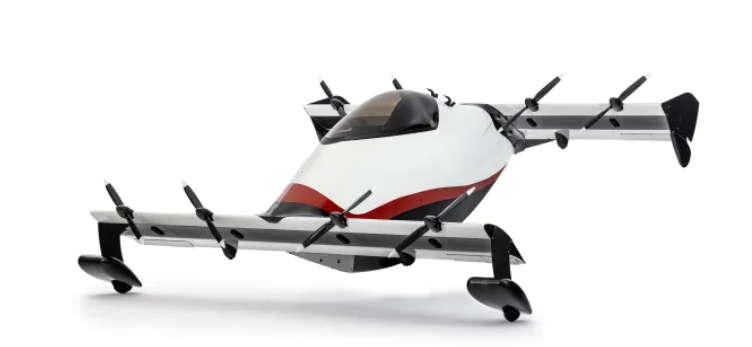The Consumer Electronic Show (CES) is known for its showcase of the future of technology. So far at CES 2024, we’ve seen manufacturers show off their latest concepts and products. Among all these, flying cars stood out. These cars are not just a fantasy anymore. They are becoming real and they are looking to change our perspective on transportation.
Spotlight on Key Flying Car Models at CES 2024
The car segment of the CES 2024 has been quite futuristic. Flying cars are part of a larger trend at the event and we’re seeing the visions for the future of transportation. Let’s look at the notable flying car announcements at CES 2024.
Supernal’s S-A2
Supernal, a subsidiary of Hyundai Motor Group, made an impression at CES 2024 with the unveiling of its S-A2. The vehicle is an electric vertical takeoff and landing (eVTOL) vehicle. This new aircraft is designed to disrupt urban commuting by offering a solution to bypass traffic through short-range flights of 20 to 40 miles.

The S-A2 combines the best features of airplanes and helicopters. It has a safe and smooth in-flight experience, similar to an airplane while providing the convenience and vertical takeoff and landing capabilities of a helicopter. This dual functionality is powered by a battery, ensuring a comfortable, convenient, and clean mode of transport.
Design and Engineering
One of the striking features of the S-A2 is its design. It includes a total of eight rotors that pivot to support vertical takeoff and then adjust for forward cruising. The aircraft can cruise at speeds up to 120 miles per hour and reach altitudes of 1,500 feet. Inside, the S-A2 is designed with comfort in mind. It features modular seats that accommodate up to four passengers, offering flexibility and efficiency in its layout.
The S-A2 adheres to global commercial aviation standards, making it safe. It has a robust airframe structure and redundancies in critical systems to ensure the safety of passengers. Additionally, the aircraft is notably quiet, producing only 65 decibels of noise during takeoff and landing, which reduces to a mere 45 decibels when cruising.
The design of the S-A2 is a collaborative effort between Supernal’s top aerospace engineers and Hyundai Motor Group’s automotive designers. This collaboration has resulted in a design that prioritizes human-centric elements, maximizing passenger experience and safety. The vehicle’s aesthetics are constructed with a focus on combining design and functionality.
Supernal plans to enter the market by 2028. It looks to leverage Hyundai’s mass production capabilities to manufacture the vehicle cost-effectively. The design is centered around sustainability, with provisions for battery upgrades as technology progresses. At CES 2024, the Supernal Vertiport exhibition showcased the S-A2 in an operational setting, allowing attendees to explore the vehicle, experience a simulated flight, and understand the role of vertiports in integrating eVTOL aircraft into existing transit options.
XPeng Aeroht
XPeng Aeroht, a division of the Chinese electric vehicle company XPeng, showcased its stunning eVTOL flying car. This concept car is designed like a flashy sports car and a helicopter.

The XPeng Aeroht eVTOL Flying Car is electric-powered, but specific details about its propulsion system are still under wraps, as the focus is currently on the concept stage. The design has multiple helicopter-like propellers that allow it to achieve vertical takeoff and landing, a feature that sets it apart in the space of personal flying vehicles. The company has also introduced another concept, the Modular Flying Car, which has a Ground Module and an Air Module. This shows XPeng’s dedication to exploring diverse approaches to flying car technology.
Design and Engineering
The XPeng Aeroht is designed to address the challenges of urban commuting. It specifically targets short-distance and low-altitude travel to overcome traffic congestion, just like the S-A2. The vehicle, while retaining the appearance of a traditional supercar in its land mode, changes into a eVTOL capable of vertical takeoff and landing in its flight mode. This feature removes the need for a runway.
The vehicle’s electric nature aligns with the increasing trend toward sustainable transportation solutions, and its estimated price is around $200,000. The company plans to open pre-orders for this innovative vehicle later in 2025, signaling its readiness to transition from concept to reality.
Helix
The Helix, showcased at CES 2024 by Pivotal (formerly known as Opener.aero) stands out for its unique design and capabilities. As Pivotal’s fourth-generation platform, the Helix builds upon the technology of its BlackFly predecessor but introduces several improvements.

Priced starting at $190,000, the Helix is available for order from January 9, 2024, with the first vehicles expected to start shipping on June 10, 2024. The Helix comes in three different packages, each offering a variety of customizations and added features. These packages range in price from the base $190,000 to $260,000, with each tier offering additional features such as enhanced exterior finishes, advanced camera systems, and additional training and warranty options.
Design and Engineering
The Helix is designed as a single-seater eVTOL, resembling a sideways ‘H’ structure. The pilot is seated in the central part of the ‘H’, with fixed wings located in front and behind. It is equipped with four propellers on each wing that provide both lift and propulsion. The aircraft has a top speed of 62 mph and a range of about 20 miles. Charging times vary depending on the model, ranging from 75 minutes to 4.5 hours. The Helix cannot drive on the ground and needs to be transported in a trailer when not in flight.
An interesting aspect of the Helix is that it falls under the FAA’s Part 103 (Ultralight) category, meaning it does not require a pilot’s license to operate. However, Pivotal requires all Helix pilots to undergo comprehensive flight training, which the company provides. The training is necessary to ensure safe operations, and pilots are restricted to flying in non-congested areas only and must stay clear of airports.
Unlike the A-S2 and the XPeng Aeroht eVTOL Flying Car, Helix is designed for personal recreational aviation rather than a practical solution for city commuting.
Frequently Asked Questions
Future flying cars won’t need runways, thanks to vertical take-off. They will likely be powered by electric propulsion systems, emphasizing sustainability and noise reduction.
Flying car demand is currently limited, but growing rapidly. While not yet mainstream, it’s projected to reach billions by 2035.
Conclusion: Flying Cars at CES 2024
The flying cars we’ve seen at CES 2024 signify a shift in urban and personal transportation. It looks to feature promising faster travel and less road congestion. However, their widespread adoption raises concerns about environmental impact, air traffic management, and societal adaptation. These developments highlight the need for sustainable, regulated approaches as we embrace this futuristic mode of transport.

